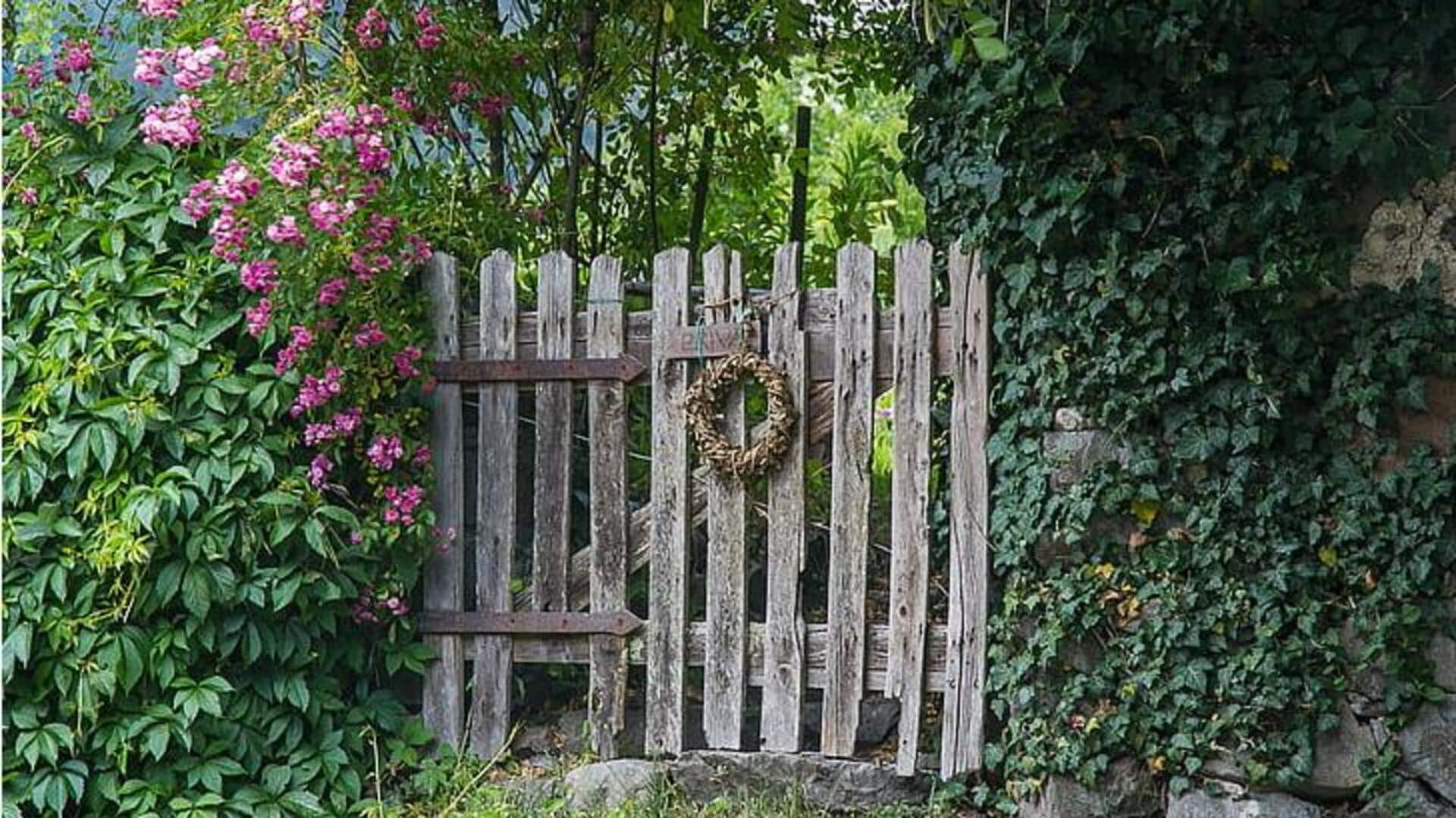
How to design a garden using Wabi-sabi, a Japanese technique
What's the story
Wabi-sabi is an ancient Japanese technique that is all about appreciating beauty in its most natural and raw state. It is based on three principles - nothing is perfect, nothing lasts, and nothing is finished, and urges people to embrace imperfections. One can use this concept in artwork, home decor, and gardening. Here's how you can have your very own wabi-sabi garden.
Tip 1
Rusty gates, hinges, and weathered wood
You can give the entry/exit door to your garden a rustic look by using wood and texture paints. This shows the effect of time since Wabi-sabi says that nothing lasts forever. Using rusted hinges and bolts can further amplify the essence of Wabi-sabi in your garden. You can also add vintage handles and lights on or near the door to accessorize it.
Tip 2
Add plants that age gracefully
One of the best ways of using Wabi-sabi in designing your garden is to add plants that will change their appearance over time, especially when seasons come and go. A textured tree or one with a peeling bark makes for a sensible (and thematic!) investment. Perennials and self-seeding plants are great too. Let dry leaves remain on the ground instead of clearing them frequently.
Tip 3
Stones for moss and lichens growth
You can place large stones in areas of your garden with low to no footfall. This will encourage the growth of mosses and lichens on them. A better idea is to incorporate some man-made stone artwork and allow these living organisms to fully cover them. You can also enhance the landscape design by adding weathered objects such as broken pots and gardening tools.
Tip 4
Let wooden logs age and offer habitat to wildlife
Wooden logs slowly decompose and join the soil. During this process, fungi or some plants may colonize them owing to accumulated moisture. This can offer a sense of Wabi-sabi to your green space as they reflect the essence of nature and time. Over time, these logs can also become homes to various wildlife creatures like squirrels, embracing an all-around connection with nature.